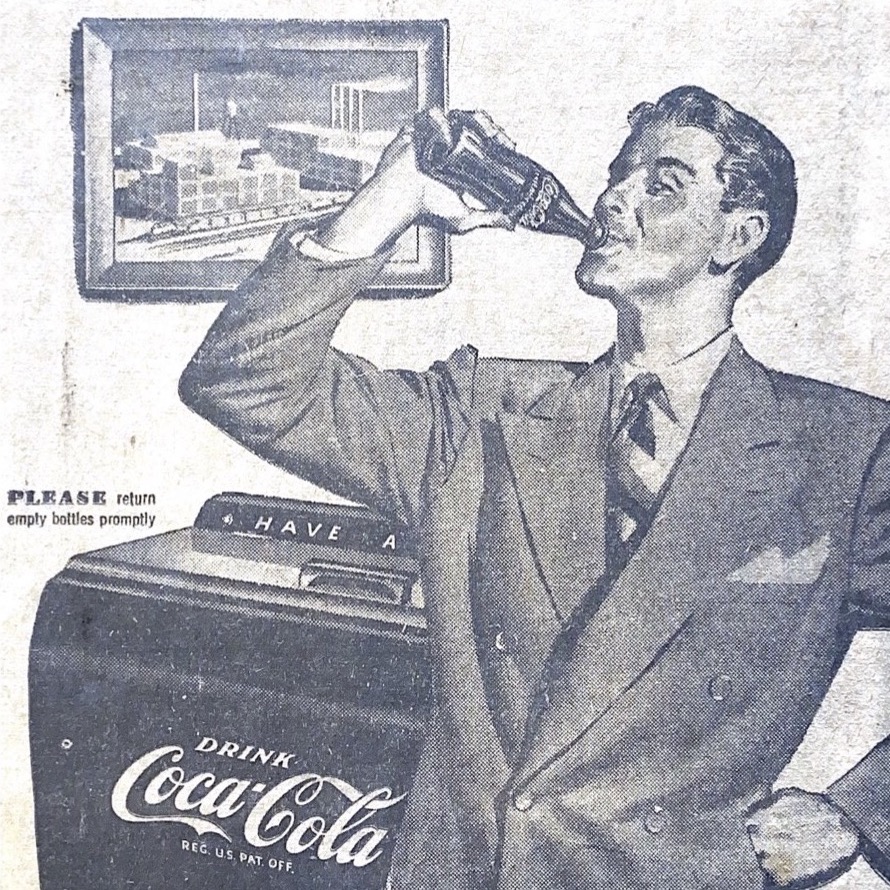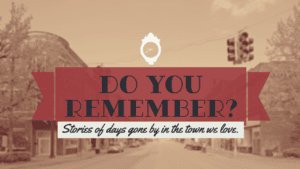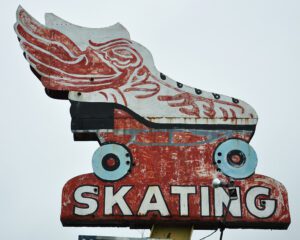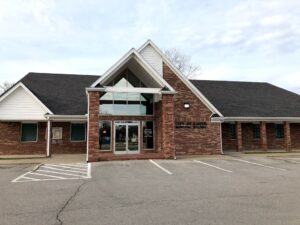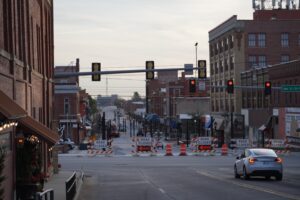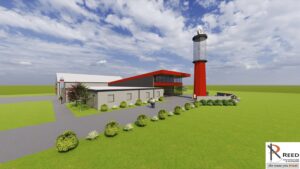The Coca-Cola bottling Company started out in 1905 as the Sapulpa Bottling Works at 11 East Bryan Ave. and was owned by Al Straughn. In 1911, it was purchased by Charles “Charley” Oakes, who launched a soda water bottling plant in Harrison, Arkansas in 1902. Six years later, he sold the company to T.N. Trettaway, who sold it in 1919 to J.E. Strange and Willis C. Strange, the latter who managed the plant for his brother.
The brothers bought the plant because they felt Coca-Cola would take off as it had in the South. They modernized the plant by replacing the old machinery with “modern up-to-date equipment such as a liquid carbonator, a Miller Hydro washing machine and two Shields Automatics, each driven by individual motors.
The Sapulpa Herald called the facility, “one of the most modern bottling plants to be found in the state.” W.C. Strange said, “the success of the Sapulpa Coca-Cola Company since the take-over by the Strange brothers is attributed to quality goods and excellent service.” The water to make the soft drink was taken from deep wells owned by the company.
A total of four delivery trucks, painted solid yellow with red chassis and lettering, serviced all of Creek County.
In 1927 Oakes purchased the plant and immediately spent $10,000 on new equipment. An additional 16×38 room was constructed at a cost of $1,000. The room featured a fishpond in one corner to prevent the “miscellaneous” stacking of boxes and to present a more attractive interior.
Well water was used and sent through a treatment and filter tank to ensure purity. The mixture was then cooled and combined with carbonated water. The entire procedure of mixing, cleaning the bottles, and filling them was an automated process. The average daily output was 125 cases per day, however, the plant had the capacity to produce 700 cases per day. Besides Coca-Cola, fruit flavors were also bottled at the Sapulpa plant.
By 1937, Charley Oakes—who had started out life in a one-room log cabin seven miles north of Bentonville, Arkansas—had become a prominent businessman and an active member of the community. He was president of the school board and president of the Rotary Club.
A few years later, Jerry Croston, who had married Oakes’ daughter Mildred, took over the plant and in 1955 The Coca-Cola Bottling Company held an open house for their building at 620 South Grove St., up on Sunset Hill.
The plant incorporated state-of-the-art equipment with the latest safety features. Unlike the old plant, this one used municipal water that was re-chlorinated and sent through a special filtering system using sand, activated charcoal, and a paper polish filter. The syrup came in stainless steel drums and was forced under pressure into the syrup mixing machines.
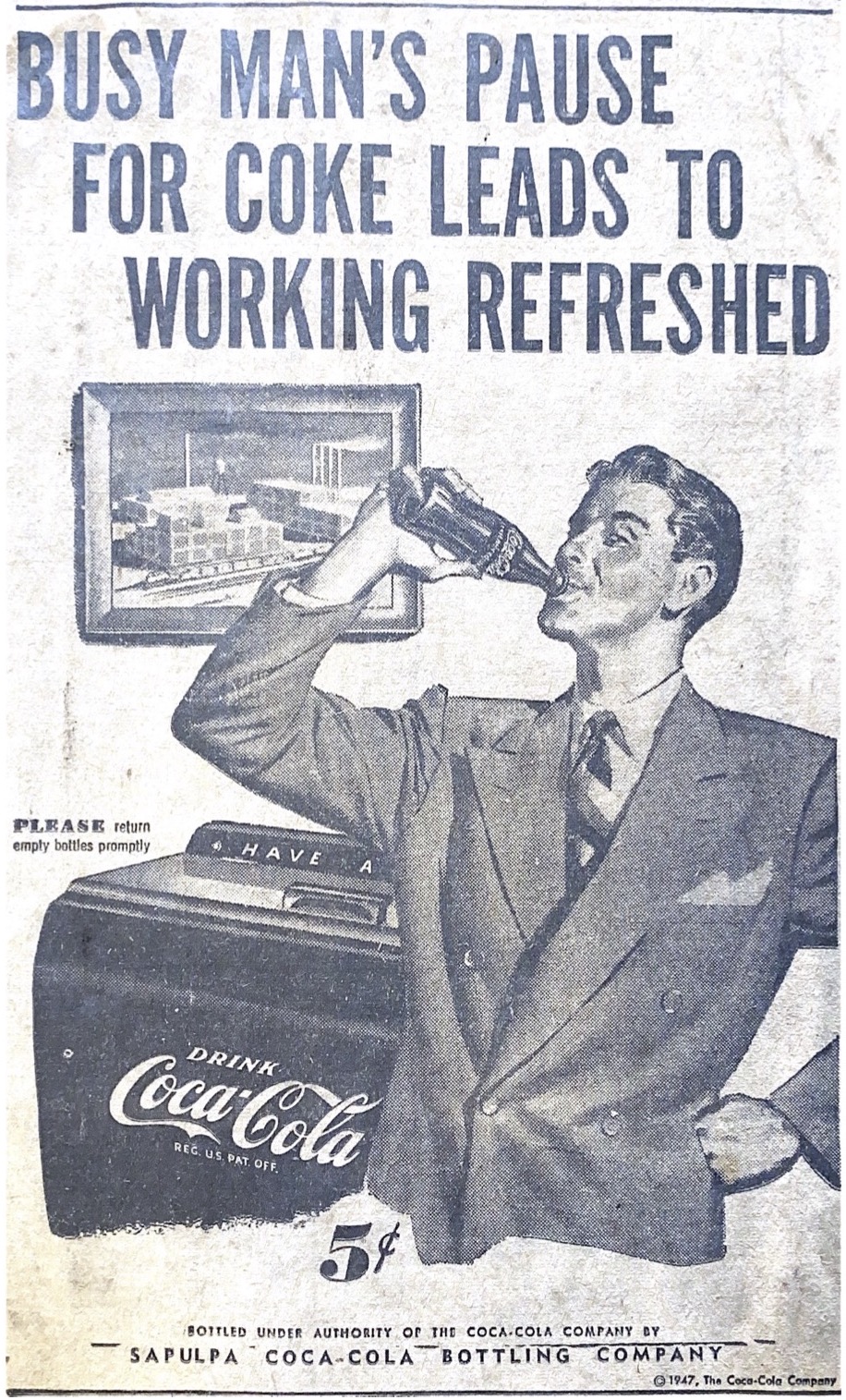
Daryl Howard remembers touring the plant during elementary school and marveling at the way the process worked. He also remembers buying a nickel coke from the machine at the plant and said the dispensed drink was “quite cold.”
In 1959, thieves pried open a door of the plant and tried to break into the safe by knocking the knob off the front, but they were unsuccessful. Law enforcement was unable to gather fingerprints because the safe had been wiped clean.
Rick Tyler said his father had Coke delivered to them at their store and placed in a pop machine, He recalls that “Stoop” Pritchard, who was the delivery driver, was so tall that he put the empty cases on the top of the truck without a ladder.
Stoop delivered to my father’s store. Dad bought two wooden cases a week, stored them in an old refrigerator, and took pop home as we needed it.
Ross Rainwater says that his father also had Coke delivered to the family business and kept in a refrigerator.
When I was a young lad I had a pop stand in front of our house at 124 West McKinley Ave. Dad built what looked like a firecracker stand that locked and had shelves. I had two large ice chests. I had Coke and flavors delivered directly to my youthful enterprise.
In 1964 Jerry Croston left the bottling business and decided to become a watchmaker. Sadly, he died a year later.
As with many other local businesses and industries, the bottling plant is now nothing more than a fond memory. The building is still standing on South Grove.

